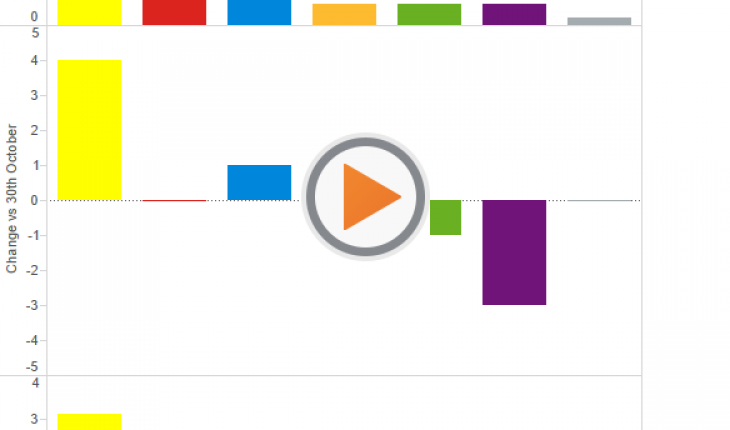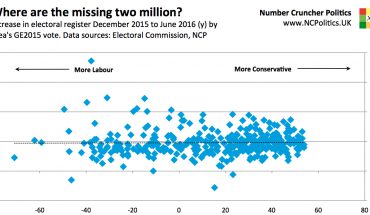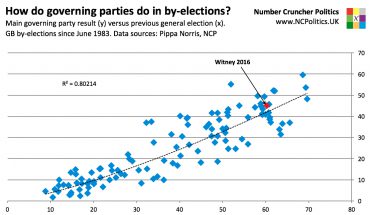A few hours after I wrote about the state of play in Scotland, YouGov published a Scottish poll. Call it Murphy’s law (no pun intended) but it’s not the first time that’s happened. The poll was very similar to what the aggregated crosstabs had implied (the differences were all within the margin of error), with toplines (and changes vs YouGov’s last Scottish poll) of SNP 47 (+4) LAB 27 (=) CON 16 (+1) LIB 3 (-1) UKIP 3 (-3) GRN 3 (-1).
It also found a 52-48 split in favour of independence (excluding DKs).
This poll was well-timed just ahead of the Scottish Labour leadership announcement, because it gives us a benchmark against which to assess any changes that subsequently occur. But for now, speculation has already started about what this could mean in terms of Scotland’s 59 Westminster seats. On a uniform national swing, the SNP would have 51 seats, Labour 6 and the Lib Dems 2. It also suggests that Jim Murphy would lose his seat, after a recount or two. But given the size of the swing (21% from LAB to SNP), uniformity isn’t just unlikely, it’s mathematically impossible, since it implies that Labour would have negative vote share in 4 seats (and, incidentally, 9 lost deposits) and the Lib Dems below zero in 36 (and below 5% in 43).
I’m going to avoid making any formal projections until I’ve seen at least some constituency polling (the first of which is expected this week. But how could the swings look? One alternative model is proportional swing, which instead of assuming constant relative changes in each seat, assumes a constant ratio of each party’s 2015 votes to its 2010 votes. This avoids the negative vote share problem by only taking votes away from Labour and the Lib Dems where they actually have them. Likewise, the SNP only takes votes from parties that are losing them. In Dumfriesshire, Clydesdale and Tweeddale for example, the SNP are challenging the Conservatives, whose Scottish vote share is little changed from 2010, so under proportional swing the SNP gain relatively few votes and the Tories hold the seat. Overall, this method gives the SNP 46 seats, Labour 10, Conservatives 3 and the Lib Dems wiped out, dropping 52 points in Orkney and Shetland.
There’s also Martin Baxter’s strong transition model from Electoral Calculus, which combines elements of both and estimates SNP 48 seats, Labour 11 and nothing for the coalition parties.
So while all three give different results, all three have the SNP and Labour within a five-seat range.
Technical assumptions aside, there are other things to consider. Will the changes in party leadership affect which areas are strong and weak for the SNP and Labour? How will each party allocate its resources on the ground and what effect will that have? Will the Lib Dems defy gravity as many expect them to do south of the border?
And although neither the Scottish Greens nor UKIP are keeping up with their colleagues in England and Wales on the basis of this poll, both are polling more than 4 times their 2010 results, and could vary considerably (particularly along demographic lines). This could affect the larger parties even if neither look likely to win seats themselves.
Update:
.@scottishlabour new leader @jimmurphymp says he will be an MSP and Labour’s candidate for first minister by 2016 http://t.co/ARRyvq8cgh
— BBC Scotland News (@BBCScotlandNews) December 14, 2014
If @jimmurphymp stands down in his Westminster seat at GE2015, it could be a v interesting three-way fight. Blue until 97 on same boundaries
— NumbrCrunchrPolitics (@NCPoliticsUK) December 14, 2014







